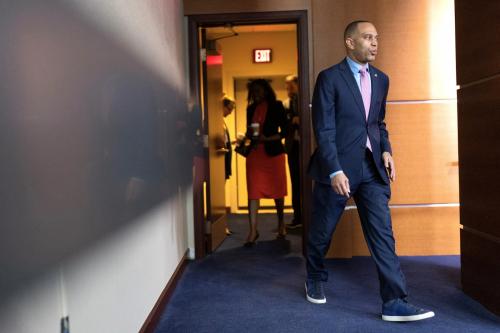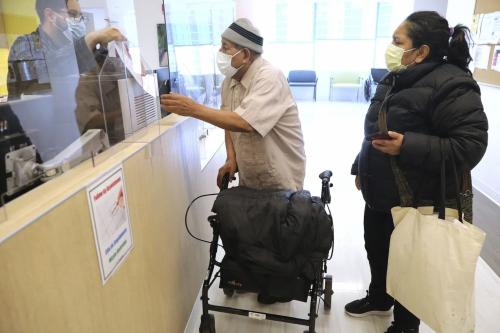This post discusses sexual assault and rape in a court case. Please proceed with caution.
Juries have been likened to black boxes. Observers know what goes into the box (the evidence) and what emerges (the verdict), but they know little about how the jury went from the admitted evidence to the verdict. The Trump civil jury was a blacker box than most. We don’t even know who the jurors are. While windows into the box are often opened through post-trial juror interviews, at least to this point, no windows have been opened, and the judge has urged the Trump trial jurors to keep things this way.
However, half a century of jury research has revealed much about how juries deliberate and reach verdicts. Drawing on it allows informed speculation about why the jury returned the verdicts it did.
Juries are not acting inconsistently if they believe some of what a witness says but not her entire story. Thus, one does not need to know anything about jury deliberations to dispose of one commonly expressed intuition about the jury’s verdict; namely that the jury contradicted itself when it found that Trump sexually assaulted Carroll but that he did not rape her. The two offenses are different. While rape necessarily includes a sexual assault, sexual assaults encompass behaviors that, legally speaking, do not constitute rape, and the jury was instructed on these differences. Also, witnesses may be more confident when they relate some portions of their stories than when they relate others, and other evidence may corroborate some but not all of what a party has claimed.
In Trump’s trial there was considerable evidence that could give a reasonable juror pause about accepting Carroll’s rape claim while not substantially undermining her claim of sexual assault. Carroll did not go to the police after the assault occurred; she said nothing publicly about her experience for 30 years; her first public disclosure of Trump’s assault may have been made to boost book sales, and she seems to have had little use for Trump’s politics. These considerations cut, of course, against believing any of Carroll’s accusations, so even if they gave some jurors pause, by themselves they are unlikely to explain why the jurors doubted Carroll’s rape charge but were unanimous in finding sexual assault.
Other evidence, however, can explain the judgmental differences. Chief among these is that Carroll did not see Trump’s assault as a rape when, in the immediate aftermath of the assault, she told a friend what had happened. Her failure to see what happened to her as rape appears less unlikely if she had only been penetrated digitally. It is also easier to see how digital penetration could have occurred despite the relatively small confines of a department store changing room and Carroll’s struggling than it is to envision penile penetration as also occurring.
Moreover, jurors acquainted with the modern research on memory would find it plausible to suppose that with the passage of time Carroll’s memory of what happened had changed so as to create an honest but mistaken memory of rape. Finally, the plausibility of the rape and sexual assault charges are also differentially affected by the evidence that took this out of the realm of pure “he said/she said” cases. Evidence that was crucial in this respect include the Hollywood Access tapes and the experience of two other women who testified Trump had assaulted them. Trump’s other assaults, and even his p…y grabbing admissions on the Hollywood Access tapes fell well short of rape. They supported Carroll’s sexual assault charge to a far greater extent than they did her claim of rape.
The dominant model for explaining jury decisions is called the story model. Juries try to construct stories that explain the evidence presented to them. Given what the jury heard, it was probably easier to construct a compelling story of a sexual assault than a story in which the assault included a rape.
This is not to say that the jury would have been acting unreasonably had it found that Trump had raped Carroll, nor would it be a surprise if we later learned that some jurors felt this way. If so, Trump may, however, have benefitted from the greater seriousness of the rape charge. The standard of proof in a civil case is by a preponderance of the evidence, which is usually seen as meaning that the probability a plaintiff’s claim is true is at least a smidgeon above 50%. But this is not necessarily how things work. Lay jurors do not speak the language of mathematics, nor are they likely to approach their task as one which requires them to place each sides evidence on a balance to determine whose evidence is weightier, even if this is the image the law’s language conveys. Rather, having been instructed that the standard is a preponderance of the evidence, jurors want to feel comfortable that they are making the right decision. Knowing that rape is, next to murder, our country’s most serious crime, even if the case is a civil suit, some jurors may have needed to feel particularly certain in their judgment to declare that a rape had occurred.
In addition, I have encountered suggestions that finding for Carroll on the sexual assault charge and for Trump on the rape charge is a kind of “split the difference” or compromise verdict. While it may well be the case that the jurors differed in their views of whether a rape occurred, the final verdict does not bear the hallmarks of a fought over jury compromise. If deliberations begin with two factions strongly committed to opposing views, it usually takes many hours of deliberations before an acceptable common ground is reached. This verdict was returned in under three hours, suggesting there was substantial agreement on the most important issues from the outset. Much of this time was probably devoted to reconciling different views of the damages that Carroll suffered rather than debating Trump’s behavior at Bergdorf Goodman. It would not, however, be surprising if jurors compromised on damage amounts.
Perhaps some who were in the jury room will eventually provide more detail about what transpired during their deliberations and why the separate verdicts and the amounts awarded took the forms they did. But from this remove, it appears that the Trump jury performed admirably given the evidence.
The Brookings Institution is committed to quality, independence, and impact.
We are supported by a diverse array of funders. In line with our values and policies, each Brookings publication represents the sole views of its author(s).








Commentary
Understanding the Trump civil trial verdict
May 11, 2023